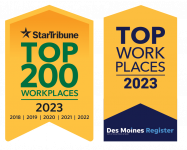
How GIS Enhances Public Outreach
Public engagement has always been a crucial aspect for projects that require input and opinions from citizens and stakeholders. Over the last five years, technology availability and convenience has rapidly increased. With the internet at our fingertips, a wider audience can be reached, and public input can be collected and analyzed more efficiently and accurately. By developing and implementing Geographic Information System (GIS) engagement tools, more opportunities have been created for stakeholders to gain access to new information and gauge how projects are affecting their communities. These user-friendly GIS engagement tools are easily shared through a city’s project website, social media, and email.
Why GIS as an Engagement Tool?
In our tech-savvy world, community-based projects need to have an online presence to effectively reach all demographics. GIS-based tools go one step further and enable location-focused discussions. These engagement tools allow community members opportunities to interact and get involved with the project. The more people use these tools, more data can be gathered to fully understand the community. With this data collected already in GIS format, it is easier to create graphics and maps quickly for project stakeholders to make informed decisions.
The Tools Needed to Succeed
Using the right tool for the right project is critical, not only for the city’s time and dollar, but for credibility in being able to stand behind developed communication plans. The community experts are residents, workforce, and stakeholders who deal with these issues first-hand. The right communication approach encourages their involvement in identifying issues and developing appropriate solutions. The following tools are effective at collecting, analyzing, and distributing public input that is beneficial for both consultants and stakeholders.
Esri GeoForm is an application used to gather input on existing conditions within a community or project area. The customizable interface and tools allow users to add comments specific to a location and view previous comments, providing the ability to track trends.
INPUTiDTM is a GIS-based application that allows the public to provide comments specific to a location regarding design and construction staging alternatives. Users can like, dislike, and respond to previous comments, allowing trends to be tracked. The difference between INPUTiDTM and GeoForm is the ability to upload improvement concepts and construction staging plans for residents to comment on.
Esri Story Map is an interactive, online collection of supporting information that helps tell a community’s story. This technology allows embedding of multi-media resources and interactive input opportunities into an intuitive, scrollable, online interface. This can be customized with text, photos, videos, interactive maps, surveys, and other elements to suit the project and communities’ needs.
Survey 123 is a customizable survey template hosted on the project website and emailed out to collect project-specific input. Survey results are then visually summarized in charts, infographics, and maps.
Tools in Action
The Dakota County-led Highway 70 Expansion Project in Lakeville, Minnesota is expanding a two-lane highway to a four-lane divided highway providing connections to residential neighborhoods, established industrial parks, significant commercial businesses, and future high growth areas. GIS engagement tools have been critical in collecting data through a wide range of demographics, while maintaining the data specific to the corridor’s location and summarizing it for public consumption.
The project team used INPUTiDTM to discuss issues and concerns with the public at the beginning of the project, rather than at an open house typically held months into the planning process. Understanding issues prior to the open house equipped the team to facilitate a meeting prepared with potential solutions and educational information that spoke to those issues.
For the 2040 City of Hopkins Comprehensive Plan, the project team developed a GeoForm to gather ideas from community members of what they wanted their city to look like in the future. The form and a corresponding map were used to identify redevelopment sites, community assets, transportation concerns, or places they liked or felt needed improvements. This was an effective way to gather a lot of input in an easy-to-manage format. The information was able to be successfully displayed back to the City of Hopkins in an interactive map.
Technology enhancements have increased capabilities and efficiency for not only collecting data but putting it to use and summarizing it for public consumption. GIS engagement tools provide a critical voice for the public and stakeholders, allowing them to have a hand in shaping their community’s future.
As published in League of Minnesota Cities
